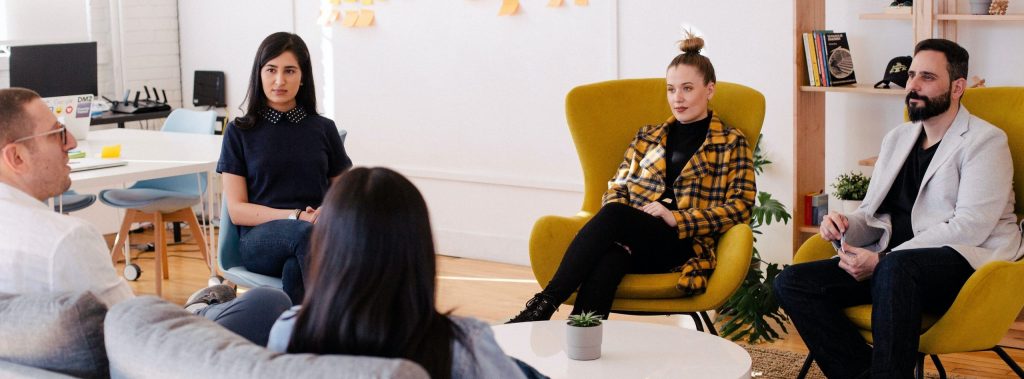Despite years of consistent, prominent and meaningful conversations in the media about race, sexual harassment, gender, disability, gender identity and mental health, 51% of people still associate the term ‘Equality, Diversity & Inclusion’ with ‘political correctness’.

Of the 1,242 people in the UK who shared their views, only 49% hold positive associations and feel the term represents an opportunity for change. That means that in every team of ten, as many as half have not yet bought into the diversity and inclusion conversation. The consequences are far-reaching and show there is still a long way to go to drive positive, long-lasting change.
Why does it matter?
When people do or say the right thing to be ‘politically correct’ the outward behaviour may look good but the motivation behind the words and actions can be less desirable. The data implies that as many as five out of ten may display inclusive behaviour in the interests of toeing the line rather than a true desire to contribute to an inclusive society, or don’t consistently display respectful behaviours at all.
You might be wondering, ‘as long as people are conforming, why does it matter?’ Well, many organisations are at a place on the diversity and inclusion journey where they are fighting against the relative subtleties of unconscious bias, micro-inequities and banter more than they are against loud and overtly offensive behaviour. If there is a lack of buy-in to the fundamental benefits of tackling inequality and exclusion, there will always be an undercurrent pushing against the direction we are working so hard to travel. It will be a barrier to seeing results.
If someone were to display inappropriate language or behaviour, we are made aware of an issue that needs addressing and can act accordingly. If people are doing and saying the right thing but deep down there is conflict with their personal beliefs and intentions, it creates a hidden barrier that is much harder to address.
So, what can we do?
Change the Language
The words we use matter. Over time, terms become loaded with connotations that trigger different thoughts and emotions, often without us even realising it. Here at RightTrack Learning, we have recently started to call Equality, Diversity and Inclusion training, ‘Conscious Inclusion Training’, to provide a fresh connotation-free terminology that is less likely to trigger eye rolls, yawns and folded arms from the half of the room who can’t help but wonder if training might just be a waste of their time.
If you want to have diversity and inclusion on the team meeting agenda, included in performance reviews or staff surveys, think hard about the words you use. Leave jargon behind and make it as accessible as you can.
Ask questions like:
- Do you connect with your colleagues?
- Which team members do you know least about and how could you get to know them better?
- Do you feel respected by colleagues?
- How might stereotypes or assumptions impact the level of service we offer to different customer groups?
- What is the culture in our organisation?
- How would our team dynamics look to someone outside looking in?
- What part do you play in contributing to this culture?
- How could we make it better?

Share Perspectives
Having the opportunity to understand how it feels for others can open our minds to the barriers and challenges others experience daily. Sharing real stories of how inequality or exclusion impacts brings a human perspective to an otherwise faceless term. Take advantage of international days or months like International Women’s Day or Mental Health Awareness week; create inclusion steering groups; consciously seek out opportunities for different team members to work together; and provide a space at team meetings to explore culture, team dynamics and inclusion.
The key to changing the narrative and overriding speculation is consistency – in our messages, in role modelling behaviours, and in keeping the conversation going.
Show it impacts us all
We have heard comments from many individuals over the years with regards to feeling less part of the equality and diversity conversation for one reason or another. But let’s be very clear, everyone has the right to feel included from both a legal, and moral perspective. We all bring different experiences and perspectives that contribute equally to the rich diversity of an organisation.
Be mindful about including everyone in this conversation. Don’t focus solely on protected characteristics, include general conversations about barriers to inclusion. And, when you want to create dialogue around the protected characteristics, be balanced and don’t forget the less visible aspects of people – hidden disabilities, mental health, religion/beliefs and neurodiversity.
An unforgettable video created by Accenture to share far and wide demonstrates just perfectly how we are all in this together, maybe you can share it with your team. Together we can change perceptions, but consistency is key.
Conscious Inclusion Training
In our everyday decisions and interactions, the impact of unconscious bias is profound. But here’s the truth: awareness alone is not enough to drive real transformation. That’s why we’re here to take you beyond unconscious bias awareness and propel you towards conscious inclusion.